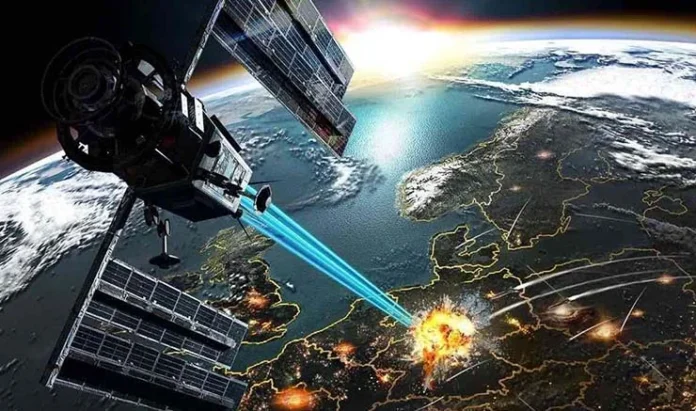Space diplomacy is a global necessity given the paradox of today’s world, where peace is a measure of deterrence proportional to its weaponisation. This terrestrial phenomenon is systematically stretching out to outer space forming part of a multi-domain operational spectrum while eroding the very principle of space being one of the four identified “global commons”, along with the ocean, the atmosphere, and Antarctica. In fact, militarisation of space or star wars has grown to be a much larger deterrent phenomenon comparable to nuclear deterrence. Thus in the current scheme of things space diplomacy has to grow beyond the confines of integration and collaboration of space-based knowledge, technology, and legislation and address militarisation as well as weaponisation of space for the larger good of our global community.
Space Domain – an extension of life on Earth
In today’s context, space remains an inextricable part of our lives in the way ordinary business is done. The single most important function remains communication or more specifically satellite based communication that help us in every aspect of our day to day activities like navigation, banking, media, receiving weather alerts or use of an ATM card. On the flip side military forces, round the world rely on space-based assets for reconnaissance, communication, navigation and more importantly for detection and interception of hostile ballistic missiles. Consequently, space is also increasingly becoming a junkyard of space debris, with dire consequences of compounding environmental issues critical to life on earth. What’s more, thanks to the growing enthusiasm of space it is a new tourism destination and a research-and-development centre.
Against the grim backdrop of an increasingly complex world order, space diplomacy has become an important socioeconomic and foreign-policy tool to keep outer space safe, secure, and sustainable besides preventing irresponsible or threatening space behaviours
This celestial insecurity echoes the growing consensus among nations that space diplomacy is the only means to a safer and prosperous life on Earth. It highlights that against the grim backdrop of an increasingly complex world order, space diplomacy has become an important socioeconomic and foreign-policy tool to keep outer space safe, secure, and sustainable besides preventing irresponsible or threatening space behaviours. Against this backdrop it may auger well to understand the level and gravity of militarisation and its consequent impact.
Militarisation of Space
Countries that have the capability of exploiting space for peaceful and commercial purposes are now the main players focussed on militarisation of space to establish their supremacy namely USA, Russia and China. India, France and the UK are also among those who are developing capabilities in a defence perspective and gradually looking at space defence. In the realms of militarisation of space, it is not only missiles that can traverse outer space or satellites that can spot targets and guide the missiles, but weapons in the form of energised satellites that can cause celestial and terrestrial damage as part of any terrestrial war. These two uses of outer space—one for the peaceful purpose and the other as a venue for war and synchronised killings—coexist which contributes to the global paradox.
Weaponisation of Space
The compulsion to weaponise space stems from the fact that in any major global conflict the big players are now striving to achieve military dominance over the other in outer space as well, so as to impact military operations on earth over land, sea and air. It is primarily the extension of the land based missile defence system developed to neutralise an incoming ICBM armed with a nuclear warhead besides protecting own satellites in space against a hostile Anti-Satellite (ASAT) weapons.
In any major global conflict, the big players are now striving to achieve military dominance over the other in outer space as well, so as to impact military operations on earth over land, sea and air
However this concept has graduated to the placement in orbit of space-based devices that have destructive capacity. In fact, space-based constituents of the missile defence system currently being deployed could also possess “dual use” characteristics, allowing them to destroy space assets as well as ballistic missiles in addition to their commercial function. That apart, a number of space-based assets are being deployed specifically to support ground infrastructure for military use such as early warning, communications, command and control, position navigation monitoring and remote sensing used for verification, surveillance and intelligence purposes. It helps improve command and control, communications, strategic and battlefield surveillance and weapon targeting. Therefore weaponisation in today’s parlance is multi use of satellites providing services to support terrestrial military operations, satellites being an integral part of terrestrial weapon systems or satellites being the weapons themselves deployed in space. A spectrum of space based weapons includes satellite-based systems for Ballistic Missile Defence (BMD), space-based ASAT weapons and a variety of Space To Earth Weapons (STEWs).
Concept and design of Military operations in Space
The concept has its genesis through the “Strategic Defence Initiative” (SDI) also known as the “Star Wars” programme of the United States. The idea was to use satellites in orbit to detect the launch of enemy missiles, trigger the launch of its own missiles so as to intercept the oncoming hostile missile and then shoot them down. This space-based anti-missile defence was conceived not as a substitute for ground-based defence but as part of the concept of multilayered defence extending into space. The missile defence system included land and sea-based interceptors designed for the engagement of the short and medium range missiles. Essentially, the idea was to form a protective shield against possible missile attacks carrying nuclear warheads. Development was undertaken of space-based sensors onboard satellites for surveillance, detection and tracking of enemy missiles, and incorporation of space-based laser weapons and interceptors for their destruction.
A number of space-based assets are being deployed specifically to support ground infrastructure for military use such as early warning, communications, command and control, position navigation monitoring and remote sensing used for verification, surveillance and intelligence purposes
Given this configuration of military space assets, the design of “space battle” envisages space control and space force application. Space control/denial of space dominance missions involves protecting orbital assets of own and friendly countries while attacking enemy assets and denying enemy access to space. The primary means of achieving these tasks are by using satellite or satellite-based weapons for active or passive suppression or destroying or degrading the performance of the enemy satellites. This may be analogous to conventional sea and air control/denial operations constituting space force application
Satellites based Space Weapon profile
Most of these weapons are planned to be deployed in satellites orbiting the earth. Major categorisation of space-based weapon systems include reconnaissance, intelligence, ASAT weapons and direct strike weapons to include Directed Energy Weapons (DEWs), Particle Beam Weapons (PBWs), Kinetic Energy Weapons (KEWs) Space to Earth Weapons (STEW) and nuclear detonations. All these are believed to be in the realms of development. At present, some of the United States’ declared projects are:
- Space-Based Lasers (SBLs): including Chemical Lasers and Solid State Lasers (SSL).
- Space-Based Missile Interceptors:
- Space based Electro-Magnetic (EM) Rail Guns
- Space-Based Infra-Red (SBIR)
- Space Tracking and Surveillance System (STSS)
- ASAT Weapons including: high powered lasers, micro-satellites, Kinetic-Energy Anti-Satellites (KE-ASAT) weapon, Near Field IR Experiment (NFIRE), etc.
- High Altitude Nuclear Detonations:
- Global Strike Programme
Preventing a Star war in Outer Space
The race for dominance of outer space has created an environment of uncertainty, suspicion, mistrust and enormous insecurity between nations, leading to a very slim and fragile tolerance level for war. This is further accentuated due to problems of space debris, radio frequencies and the availability of orbital slots. All these actions have rightly become a cause of international concern.
While there is an overwhelming majority of UN member states who are concerned with this growing trend of militarisation of space, there is very little done in terms of specificity. Legislations so far merely emphasise the peaceful use of space beneficial to all mankind. However the silver lining is the known fact that currently no weapons have been deployed in space but for a few demonstrated ASAT capabilities by United States, Russia and China. That notwithstanding, passive militarisation of space has been an ongoing process since the launch of the earliest communication satellites. Today, militaries all over the world rely on satellites fora multitude of operational functions. Therefore, “peaceful uses” of outer space include military uses, albeit passive military use of satellites. Undoubtedly there is enough evidence that militarisation of space is now a threat necessitating a global response as part of space diplomacy.
–The writer is a former GOC-Indian Army and presently a Strategic Consultant, Principal Advisor. Views expressed are personal and do not necessarily reflect the views of Raksha Anirveda
–The writer is a former GOC of the Indian Army and presently serves as a Strategic Consultant and Principal Advisor. The views expressed are of the writer and do not necessarily reflect the views of Raksha Anirveda






